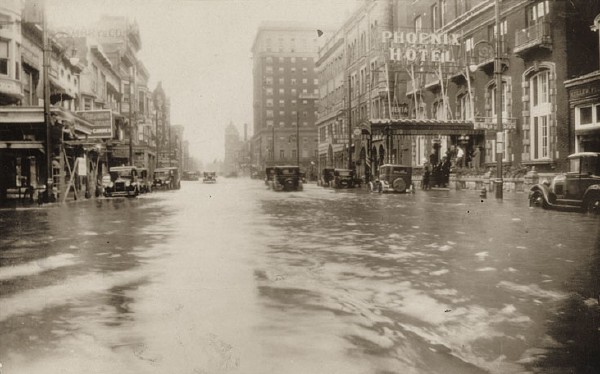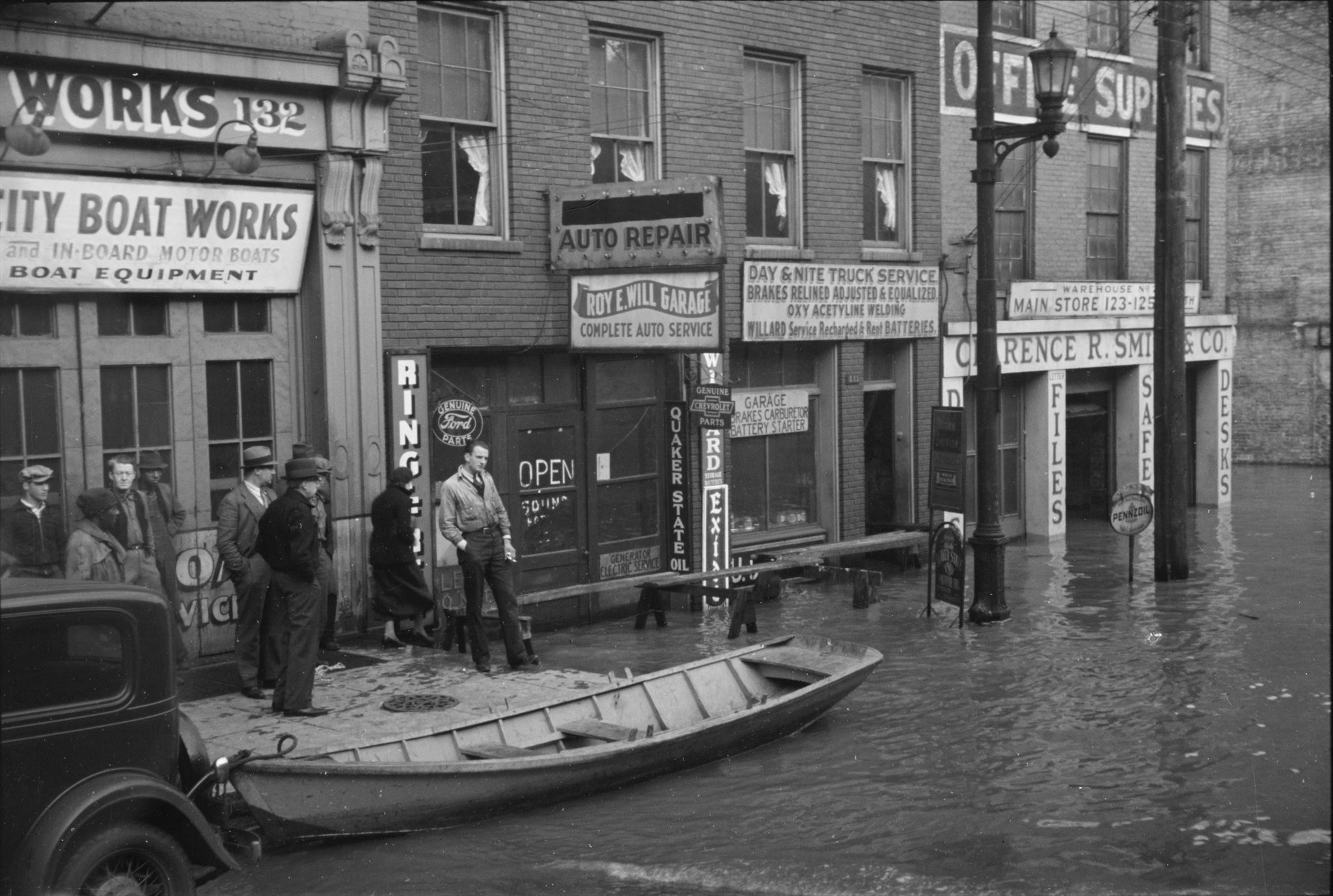Back in June 1775 this town was founded in what was still part of Virginia. Back then the town relied on a small river branch of the Elkhorn River which flowed into the Ohio River as a means to bring goods and people into town. This branch of the Elkhorn was later named “Town Branch” probably because they wanted people on the river to know which river branch to take into town. The town of Lexington relied on this river to help their town to grow; later this branch of the river would prove to be a lot of trouble.
Before the late 1930’s the downtown area of Lexington was in the “Floodplain” area of this branch of the Elkhorn River. Back then the river was much wider and deeper and had no measures of controlling it. The town of Lexington even launched a steam boat on this river from downtown.
Downtown flooded in 1928

Source: Lexington Kentucky historical society
Downtown flooded in 1936

Source: Lexington Kentucky historical society
In the later 1930’s the town decided that they had had enough and started to build a tunnel system that would control the river. They used nearby rock (Limestone) mainly from the river bed and nearby hills. After the control tunnel was built they then built a street on some portions of the tunnel and buildings on other portions. The only problem is that over time limestone erodes away because it is soluble in acidic rain. Caves are primarily made out of limestone rock. And limestone is known as a sedentary rock whereas granite is an igneous rock and can take the erosional forces way better than limestone. Try this experiment sometime on your own take a small piece of limestone rock and place it into vinegar and it will fizz until the vinegar is at the same PH as the limestone or the limestone completely dissolves. Limestone is easier than other rocks to make into sculptures and building blocks and as such is heavily used in the market even to this day. Here is another experiment to try on your own, take a piece of rock that you think is limestone and scratch it with your keys or knife. If it scratches easily it is most likely limestone if it does not then it is mostly likely an igneous type of rock.
What is Erosion?
Erosion is the process by which soil and rock are removed from the Earth's surface by natural processes such as wind or water flow, and then transported and deposited in other locations.
Types of Erosion:
Splash Erosion: Small soil particles are detached and sent airborne through the impact of raindrops on soil.
Sheet Erosion: Raindrops break apart the soil structure and it's moved down-slope by water that flows overland as a sheet rather than definitive channels. This occurs frequently during cloud bursts.
Rill Erosion: This process develops small, short-lived, concentrated flow paths. These paths create a sediment source and delivery system for hill-slope erosion. Areas where precipitation rates exceed soil infiltration rates are more prone to this type of erosion.
Gully Erosion: Water flows in narrow channels during or directly following heavy rains or melting snow. The gullies can erode to considerable depths.
Valley or Stream Erosion: Continual water flow alongside land (along a linear feature) creates this type of erosion. It extends downward, deepening a valley, and head-ward, extending the valley into the hillside. This occurs most frequently in times of flooding.
Bank Erosion: Over time, banks of rivers and streams are naturally worn down.
Freezing and thawing: Cold weather causes water trapped in tiny rock cracks to freeze and expand, breaking the rock into several pieces.
Wind erosion: is of two primary varieties: deflation, where the wind picks up and carries away loose particles; and abrasion, where surfaces are worn down as they are struck by airborne particles carried by wind.
Urbanization: has major effects on erosion processes—first by denuding the land of vegetative cover, altering drainage patterns, and compacting the soil during construction; and next by covering the land in an impermeable layer of asphalt or concrete that increases the amount of surface runoff and increases surface wind speeds.
Sources
Lexington Kentucky historical society
**Logging requirements**
DO NOT POST ANSWERS IN YOUR LOG.
Send the following answers to me via email.
- The text "GC5CM58 Town Branch" on the first line
- No photo's of the sign at the posted coordinates
- Elkhorn Creek is a tributary of what river?
- What troubled Lexington?
- What types of erosion helped to flood the town before the tunnel (Just look around)?
At waypoint “Town branch”
- Estimate the flow rate of the Town Branch of Elkhorn?
- What erosion stopping features do you see here?
| I have earned GSA's highest level: |
 |